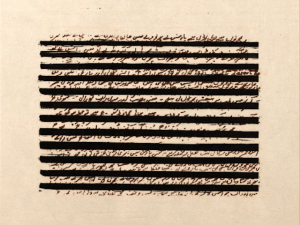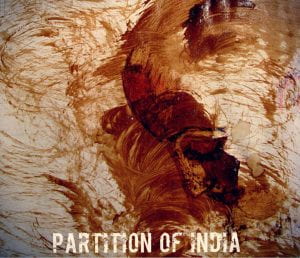Rise of South Asian Poetry in the United States
Learn more about: Indivisible: An Anthology of Contemporary South Asian American Poetry.
“Even as the popularity of South Asian American fiction writers has soared in the last decade, the voices of their versifying counterparts have remained, for the most part, in the literary background. Asked about their 7-year saga to find a suitable publisher for the anthology, the editors are likely to explain that, among other things, various presses suggested dividing the collection into thematic sections with headings such as ‘mangoes’ or ‘spices.'”
South Asian poetry is becoming increasingly more popular as the years go by, and yet there are still moments where poets and authors are faced with criticism for not writing about topics that white people are more familiar with. Well-known writers were told to write with exoticized portrayals of their culture and their country, while they really wanted to write about topics that pertain to them and talk about their cultures in different ways. “Juicy” and “spicy” are just a few of the terms used when writers were told to make their poems more relatable, rather than talk about their feelings of alienation and isolation in an unfamiliar country.
Ahmed, Dilruba. “Don’t Eat the Mango: South Asian American Poetry.” Michigan Quarterly Review, MQR Blog, 6 July 2018, sites.lsa.umich.edu/mqr/2010/11/dont-eat-the-mango-south-asian-american-poetry/.
Learn more about: Poetry of Partition .
“Partition was horrifically violent: more than 15 million people became refugees displaced from their homes…” to fully understand the historical context in much of Asghar’s writing, it will be beneficial to read what other poets and authors have to say about the subject. This site lists seven authors and poets who will give you in-depth understanding and analysis of the historical events, and will also show you how to read the pain that comes off in Asghar’s work.
Talukder, Adeeba, Faisal Mohyuddin, et al. “This Is Not the Dawn: Poetry of Partition.” Asian American Writers’ Workshop, AAWW, 28 Aug. 2018, aaww.org/this-is-not-the-dawn-poetry-of-partition/#FatimahAsghar.
Learn more about: The English Language Poetry of South Asians.
“Themes of alienation and disillusionment recur in Jussawalla’s work. In that sense, Jussawalla fits the paradigm of the stranger in his own land.” As the years go by, more and more analyses are published and there is a better understanding of what occurs in poetry that comes from international perspectives. Here, explorations of the methodology of South Asian poetry as well as perspectives from Caribbean literature are analyzed and processed, giving readers the opportunity to further their education and gain background knowledge on the importance of poetry as represented through different cultures. As seen in the quote, there are analyses from multiple different authors and poets, giving readers the opportunity to learn from numerous sources on South Asian diaspora represented in literature.
History of South Asian Poetry
Learn more about: South Asian poetry is Stylistically and thematically multivalent
“we’ve had our worth told to us since always:
two goats & maybe a nose ring or bracelet.
we’ve tried to re-learn
worth outside our bodies one day
may our names come before our sex”
-Fatimah Asghar, “Shadi” pg. 37
Poets from South Asia have traditionally focused on the themes of politics, power-dynamics, social suffering, and various forms of oppression. These elements are reflected in Asghar’s poems, but also in other well-known South Asian poets. The patterns of poetry-writing are seen all across their works, with stanzas being written in short, straight-to-the-point styles but with the overarching themes that were mentioned above. Allusions to life in America or in the United States are written throughout the pieces, and many poets and authors today are incorporating stylistic elements that are very similar to those seen throughout If They Come for Us.
Learn more about: Popular South Asian writers
Some examples of well-known poets and authors today include: Rupi Kaur, Komal Kapoor, Amy Nezhukumatathil, Faisal Mohyuddin, and Jhumpa Lahiri. They have interconnecting styles as perspectives that are not seen by any other poets known to the United States, and their ideas incorporate cultural changes and life in a country that is new to them. There is also the inclusion of being disconnected from their home-country culture, and the combination of love, loss, and pain as expressed through contemporary poetic styles.
Art relating to topics mentioned in If They Come for Us
Kashmir

“Art as an impact agent” is the title of the website relating to this piece. Two women joined together to create art that had a cultural impact on the historical understanding of Kashmir and its division in Pakistan and India. A volunteer-only collective, and hundreds of more pieces are on the site.

Children illustrate their life as their childhoods, culture, family, friends, and history are stolen from them through forced Kashmiri conflict between Pakistan and India
September 11 Attacks

“The course of the empire” on display at the Whitney museum in 2015. Art installation created in honor of the 14th anniversary of the September 11 attacks.

“Truther” art displayed in the 9/11 museum, even though its concept completely disagrees with that of the museums intention. This art aligns with the theory that the U.S. government was involved with the conflict.
Partition

Untitled piece by Tyeb Mehta. This and the other piece above can be seen through The Heritage Lab website, which outlines pieces that have been created to show the divisions and historical significance, and tragedy, of the Partition of India.
Back to If They Come for Us homepage
Grace McKenna ’19








